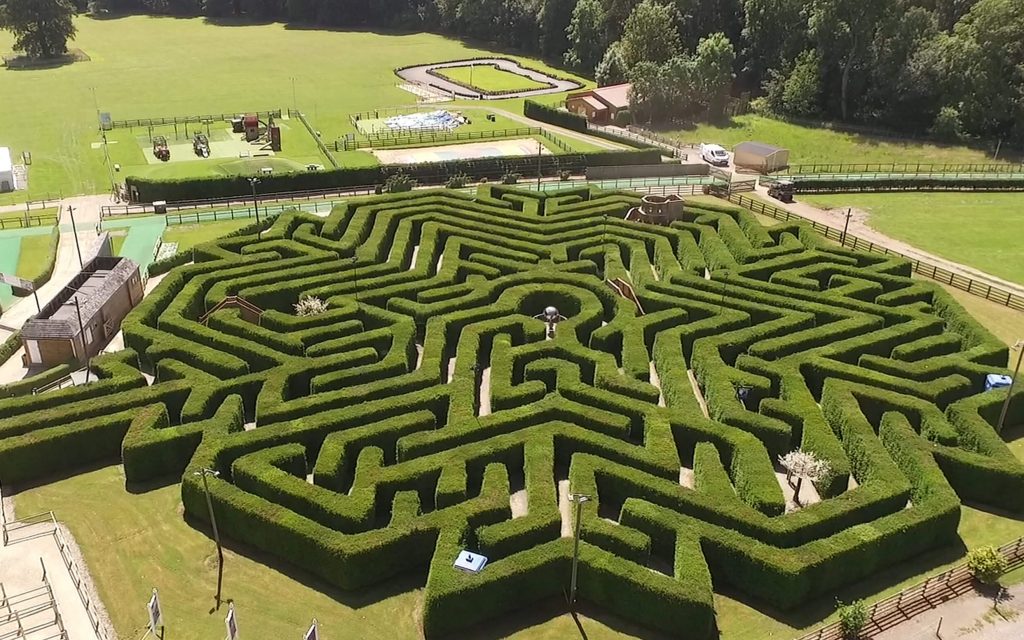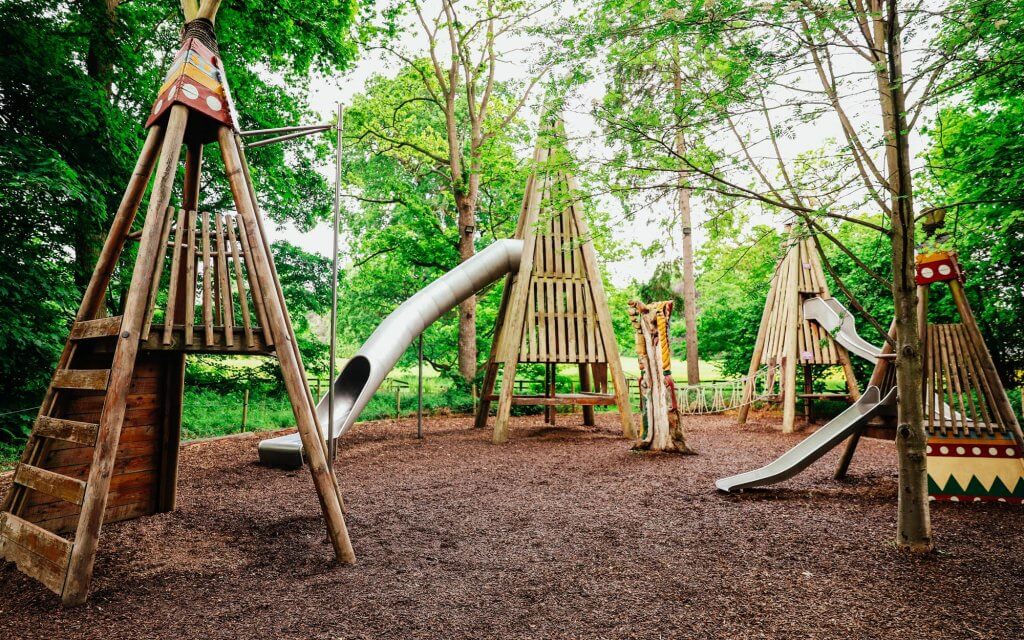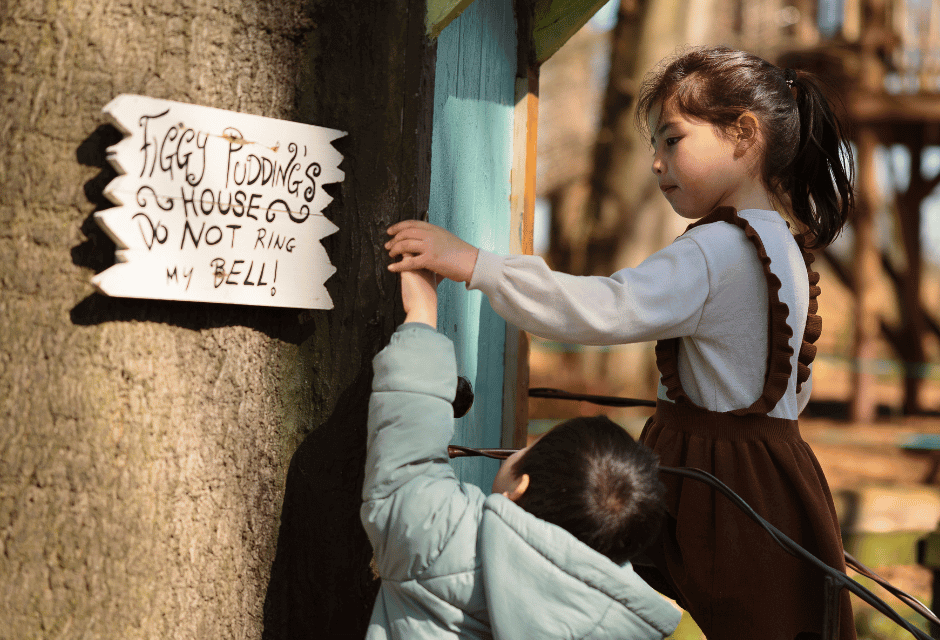Welcome to the Adventure blog!
Big news and a regular dose of magical inspiration for family days out at Stockeld Park!
The Stockeld Story – History of Stockeld Park
The history of Stockeld Park is one of scandal, adversity and intrigue.
The name ‘Stockeld’ itself has its origins in the language of the Vikings and means ‘Log Fire’, from the old Norse words Stokker (log) and Eld (fire). Ownership of the land can be traced as far back as the Norman Conquest of 1066, when it was acquired by the French nobleman William de Percy, later Duke of Northumberland. It is known that in 1166 the estate came into the hands of one Nigel de Stokeld. What is less certain is whether the land took its name from the eponymous Nigel or the other way around.
Stockeld’s more recent story begins in 1763, with the construction of the mansion house that sits at the heart of the estate to this day, built for a powerful Catholic family called the Middletons and designed by the renowned architect James Paine. The fortunes of the Middletons of Stockeld were to come crashing down just 30 years later, the result of an adulterous affair between Lady Clara Middleton and the estate groom, John Rose. The ensuing divorce between Sir William and his wife scandalized society and cost the Middletons a fortune. Such was the public interest that the owner of one contemporary magazine, one William Locke1 was taken to court for ‘the printing and publishing of false, indecent, scandalous, malicious and defamatory libel’, intended to ‘traduce, defame and vilify the character and reputation’ of Lady Clara, not to mention her lover.
Bereft, and nearly bankrupt, the jilted Sir William vacated Stockeld Park following the divorce, and returned to his native Ilkley, leaving the house shuttered and empty for some 20 years. Succeeding generations of Middletons continued to live at Ilkley, leasing Stockeld out until it was eventually sold in 1893 to a wealthy industrialist called Robert John Foster, owner of the Black Dyke Mills in Queensbury, Bradford, in whose family Stocked remains to this day.
At their height, the Black Dyke Mills were a colossal enterprise, employing several thousand people and generating revenues that would be counted in the hundreds of millions of pounds in today’s money. By all accounts, the Fosters were good employers. During the Chartist Movement of the mid-19th century, during which many mills were attacked by workers demanding greater political rights and better conditions, employees at Black Dyke gathered to defend their mill from attack.
The mill’s founder, John Foster (grandfather of Stockeld’s Robert John) was unostentatious to a fault. The following tale was recounted in the Manchester Guardian (now The Guardian), after his acquisition of a local pub in the 1870s:
“When, at the close of the sale, a rough looking individual walked into the best room of the inn the landlord frowned. He was chatting with some of the ‘better end’ of those who had attended the auction proceedings and tramp-like strangers were not for such select company. ‘T’bar for you’, he said with a jerked thumb. The stranger retired. Later, the landlord joined him in the bar and found him willing to listen to the tale of the day’s doings, a tale of lament. ‘They do say’, said the landlord, ‘that one of them wool chaps from Bradford has bowt it. I’ve a new landlord.’ The stranger nodded; his reply was devasting: ‘Aye, I’m him’.”
Perhaps John Foster’s greatest gift to the world came as a consequence of his strong belief in the importance of music for strengthening communities and contributing to social harmony. And so it was that he established the Black Dyke Mills Band, which has since become the most successful and one of the most famous brass bands in the world. Yet even in this endeavour the fortunes of poor John Foster were mixed. An avid French Horn player, John was originally part of the band, but so rapidly did the band advance that legend has it he was gently taken to one side by the conductor following practice one day, where it was politely suggested that the band might be better served with Mr Foster no longer in it!
Later generations of Fosters were not so parsimonious as John had been, none less so than Gerald Foster, son of Robert John and grandfather of Stockeld’s present owner Peter Grant. Alumnus of Oxford University and the Bullingdon Club, Gerald was an inveterate gambler and socialiser who is reputed to have spent the equivalent of one million pounds in a single year during the ‘roaring’ 1920s, on boats and casinos. Following the Wall Street Crash of 1929, a greatly impoverished Gerald got so angry that he let off his shotgun into the dining room ceiling at Stockeld, in what is today the kitchen.
Shortly following the outbreak of World War II, Stockeld Park was to play its own important role in the national effort when it was turned into a maternity hospital. Gerald and his wife Olivia moved to the adjacent Priest House, whilst their daughters volunteered to support the war effort. Rosamund, the eldest, worked as an ambulance driver, whilst her younger sister Rachel, the mother of Peter Grant, worked as a nurse in nearby Harrogate hospital. It is reckoned some 5,000 children were born at Stockeld during this period. To this day the family receive letters and phone calls from across the world from those born there or their relatives, hoping to visit or learn more about the old house where they started life.
Following the war, Stockeld passed back to the family, now under the stewardship of the aforementioned Rosamund, during which time its fortunes continued to decline. Ros, as she was always known, had been born and educated in an era when ladies of her background were not taught about business or farming, and nor were they expected to be conversant in such enterprises. Ros was greatly committed to the local community, permitting the creation of footpaths and bridleways across the estate, establishing a tea room in the basement and opening the main house to public view. Whilst much enjoyed locally, none of these things could offset the inevitable fate of all things when outgoings exceed income for long enough: bankruptcy.
And so it was to a less than auspicious future that Ros’s nephew Peter, a promising young accountant in London at the time, was summoned in 1980. Whilst Ros’s name would continue to appear at the top of the headed notepaper, it was Peter who was to take on the day-to-day management of the estate. With his accountant’s training, the 26-year old Peter went through the estate’s files and listed the credits against the debits. To put it mildly, the resultant ledger was bleak, and much of his early time at Stockeld was spent in negotiations with the Inland Revenue seeking to restructure the estate’s copious debts. Income from farming was then, as now, often meagre and many of the estate properties were in poor state of repair.
During this time Peter worked to improve the efficiency of the farms and gradually restore some of the properties, whilst simultaneously launching various other diversification schemes, some more successful than others. But Peter’s most important early idea for estate diversification was to add a new, non-edible but much sought-after crop to the farm business: Christmas Trees. In driving snow, sitting near horizontal on a planter about 12 inches above the ground, Peter and his small farm team planted the first Christmas Trees in what was to become a major enterprise. In the near-40 years hence, Stockeld Park has expanded to become Yorkshire’s biggest Christmas Tree grower, with some half-a-million trees now in the ground.
This venture was also what paved the way for the biggest and boldest diversification of them all: the creation of the Adventure Park in 2006, the full story of which you can read about by clicking here.















